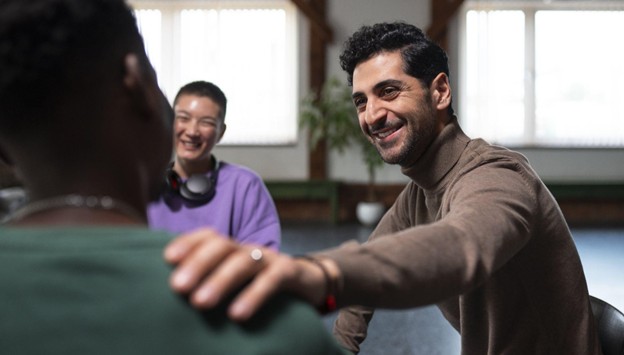
In today’s evolving landscape of giving, Christopher Halstedt represents a new kind of philanthropist, one who believes that the most valuable resource in philanthropy is not money but mentorship. His approach to leadership and service emphasizes that while financial donations can fund opportunities, guidance, and consistent involvement are what sustain them. Through this philosophy, Halstedt demonstrates that lasting impact comes from building relationships, not just writing checks.
For Christopher Halstedt, philanthropy is not a distant act of generosity; it is a continuous practice of engagement. His perspective reflects a growing realization across the philanthropic world that mentorship strengthens the very communities it aims to support. By pairing strategic support with personal involvement, he shows that human connection remains philanthropy’s most enduring currency.
The idea that mentorship fuels sustainable change is central to Christopher Halstedt’s view of modern giving. He often underscores that the most effective philanthropists are those who combine generosity with guidance. Mentorship empowers individuals to navigate challenges independently, amplifying the reach of every initiative supported.
By engaging directly with educational organizations and community development programs, Halstedt exemplifies how mentorship transforms philanthropy into an evolving ecosystem of shared growth. Each act of mentorship becomes a long-term investment in leadership, ensuring that recipients eventually become contributors themselves, a model that creates continuity across generations.
This dynamic approach redefines impact. For Christopher Halstedt, true giving is cyclical, not linear. The mentor gains insight, empathy, and renewed purpose, while the mentee gains confidence and direction. Together, they build resilience within communities, strengthening the social fabric far more effectively than financial aid alone.
Leadership, for Christopher Halstedt, is not defined by authority but by the ability to elevate others. His approach mirrors a broader movement in philanthropy where leaders integrate mentorship into every level of their engagement. In organizations that promote education, wellness, and youth empowerment, he observes how leaders who mentor often achieve stronger, more consistent outcomes than those who only provide funding.
This perspective aligns with an emerging understanding that philanthropy and leadership share the same foundation: trust. When leaders take the time to mentor, they build credibility within their communities and foster long-term loyalty among those they support. This is the essence of human-centered leadership, an approach where mentorship strengthens both the giver and the receiver.
Through his participation in mentorship programs and philanthropic networks, Christopher Halstedt has seen how this model creates measurable outcomes: better retention in community programs, improved educational success, and more equitable access to opportunity. These effects, he believes, are the true metrics of progress.
In discussing strategic giving, Christopher Halstedt often points to the need for a shift in how success is measured. Traditional philanthropy tends to prioritize numbers, dollars donated, projects completed, or events hosted. However, the impact of mentorship is best observed through transformation: when individuals who once received support become mentors themselves.
This cycle of reciprocity is what distinguishes modern philanthropy from conventional charity. It values human development as much as financial distribution. When time, empathy, and knowledge are shared as generously as funds, communities evolve from being dependent to being self-sufficient. Halstedt’s approach encapsulates this principle, reinforcing the belief that the true value of giving lies in its ability to inspire others to give in turn.
The idea of balance between giving and living is also central to Christopher Halstedt’s philanthropic outlook. He believes that genuine generosity begins with personal alignment and mindfulness. When individuals cultivate wellness, gratitude, and connection in their own lives, they are better equipped to mentor and support others authentically.
In this way, mentorship and strategic giving become intertwined with personal growth. Halstedt’s reflections on well-being, nature, and family life reveal a philosophy rooted in equilibrium: when people live purposefully, their impact extends naturally into their communities. The strength of philanthropy, then, depends as much on inner clarity as on external action.
Looking ahead, Christopher Halstedt envisions a philanthropic landscape driven by mentorship, collaboration, and long-term investment in people. The next generation of leaders, he suggests through his actions, will not be defined by how much they give but by how deeply they engage.
As mentorship continues to shape modern models of strategic giving, the emphasis is shifting toward creating human capital that endures beyond financial contributions. Relationships, guidance, and shared purpose are now recognized as the most valuable assets in the world of giving.
By bridging financial generosity with human connection, Christopher Halstedt demonstrates how mentorship transforms philanthropy into a living, evolving practice. It ensures that every act of giving leaves behind more than resources; it leaves behind knowledge, confidence, and community strength. In this model of impact, mentorship truly becomes philanthropy’s strongest and most enduring currency.